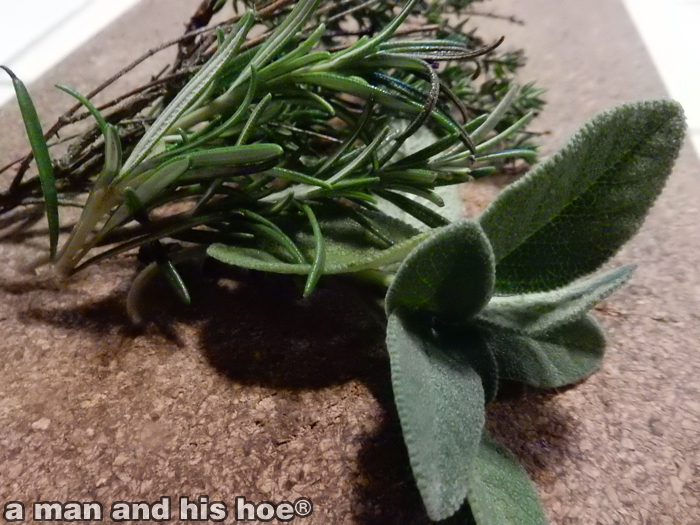Your cart is currently empty!
Month: November 2014
-
On the Trail Today

A spell of cold, dry weather is conducive to maintaining the trails that meander through the woods. The trails don’t a well thought design. For the most part, I’m widening the trails the dogs make during their regular patrols.
In the woods, there is always something fascinating to see. Even though it is a cold day, that isn’t snow on the branches above. It is a pure, white mold. And below, a cedar and wild cherry have grown up together. Their trunks and roots are enmeshed. Cherry roots flow out the trunk of the cedar. The trees are inseparable. A cherry and cedar tree, would one call that a cheddar tree?
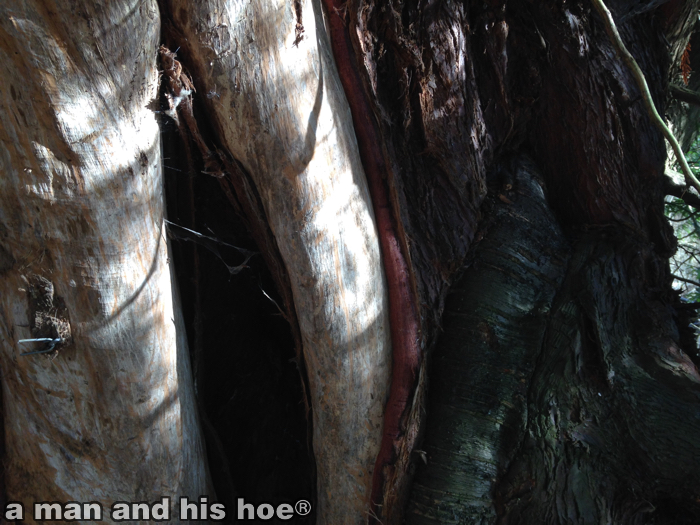
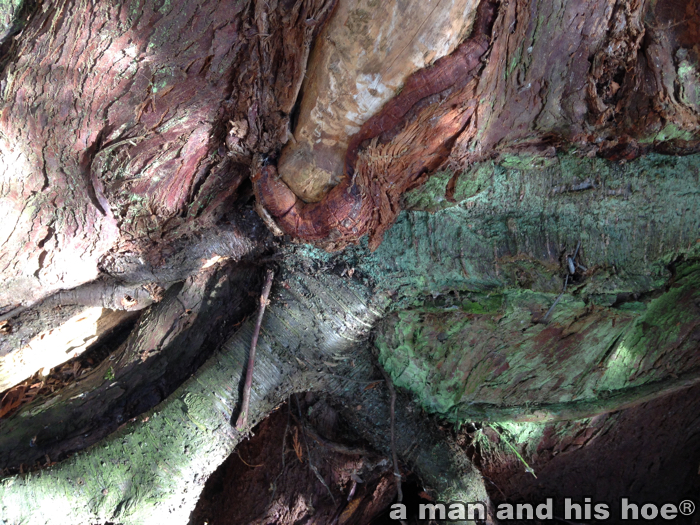
-
A Job Well Done

Lucky set her chicks free today. Just yesterday, they were all together, but this morning she was by herself, and her chicks off on their own. All I can say is, “Job well done, Lucky!”
What does a mother hen feel when her chicks leave home to fend for themselves? What about the chicks? Are they finally glad to be out from under their mother’s feet? Or is it a non-event for them?
Below is a series of photos from when she hatched them on September 15, 2014 through November 17, 2014. They’ll give you and idea as to how hard a mother works, raising her brood.
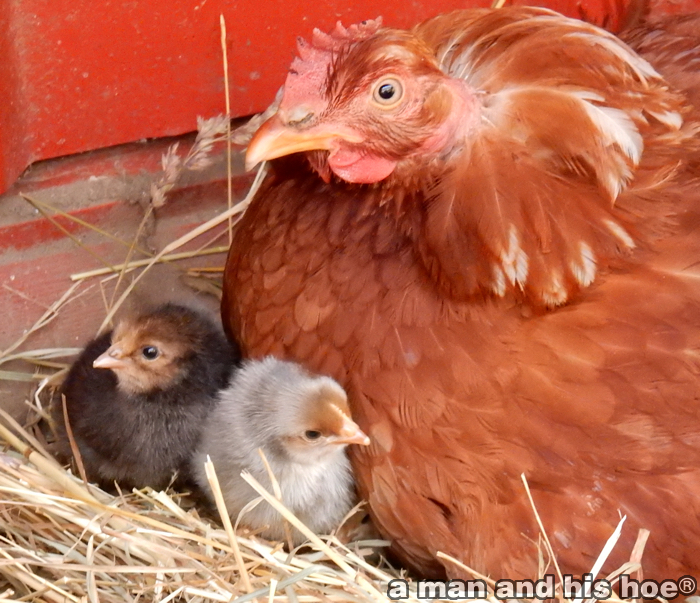
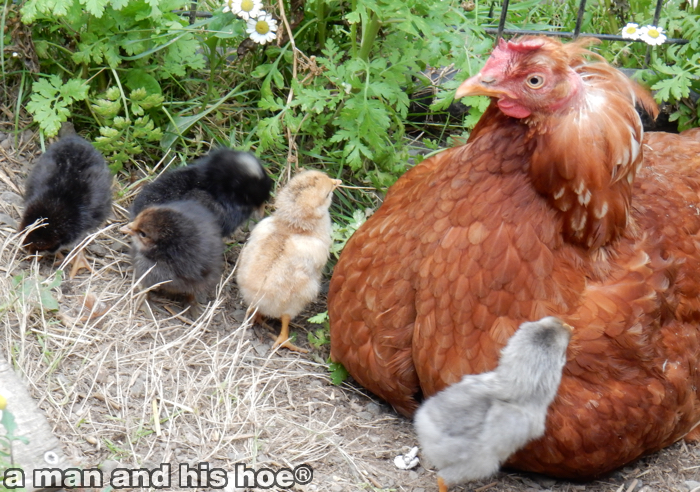
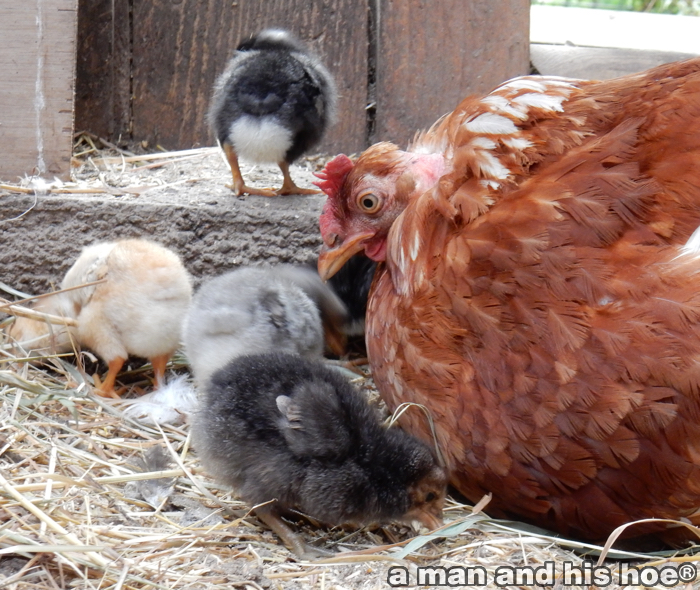
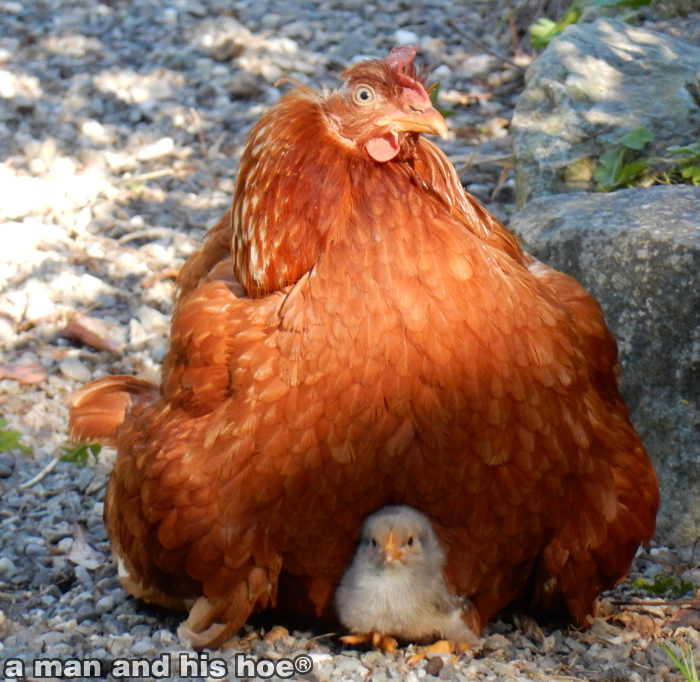


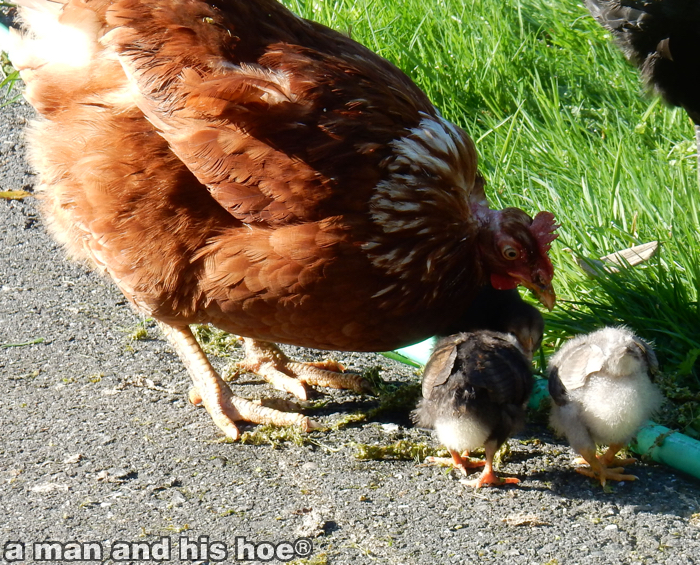

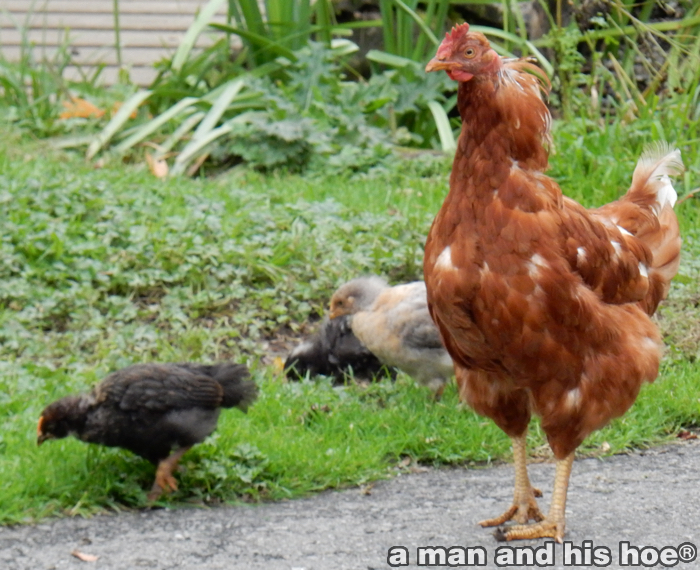
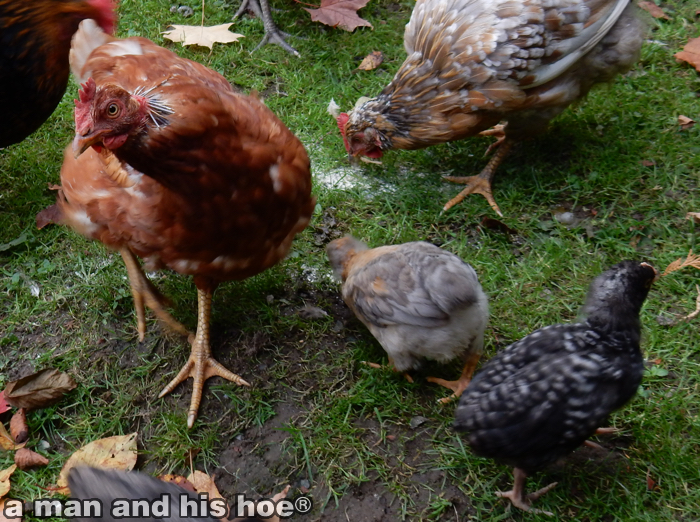

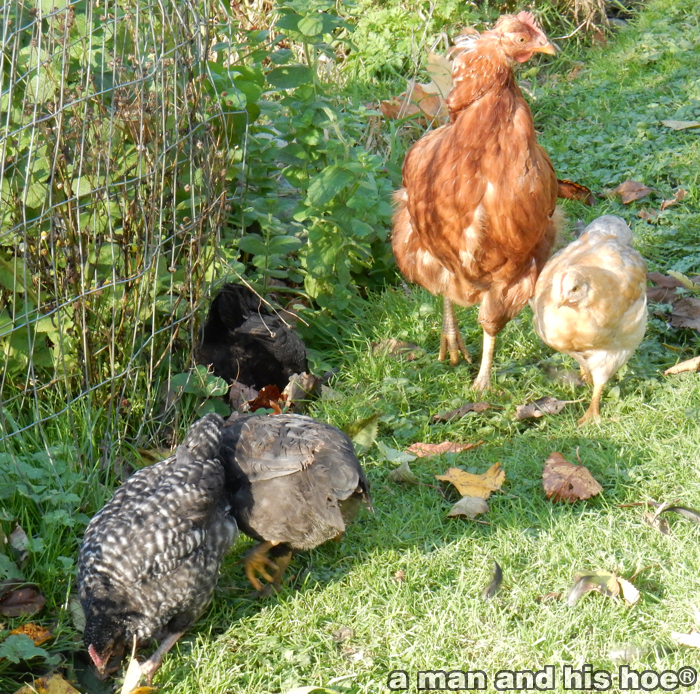
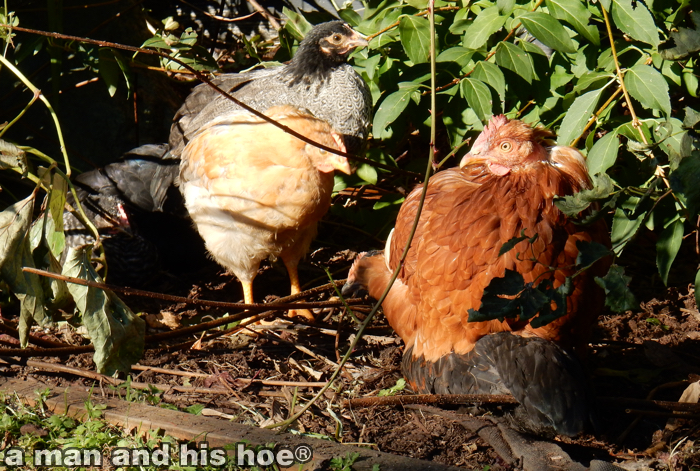
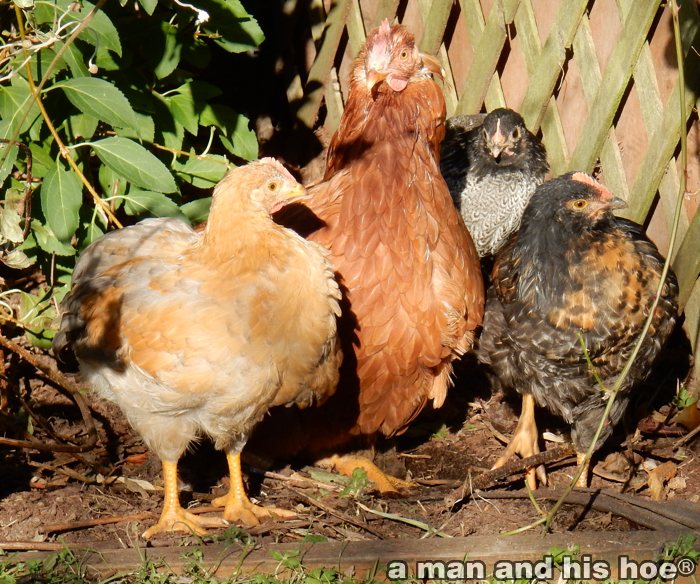
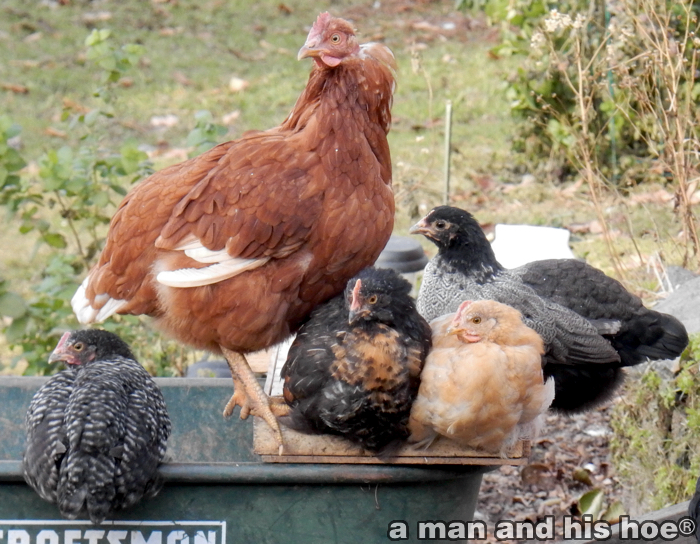
And as dusk settles, Lucky is back roosting with the rest of the hens for the first time in 12 weeks, while her chicks are bedding down where she used to spend the nights with them. Well done, Lucky. You were a superb mother. Your chicks were lucky to have you hatch and raise them.
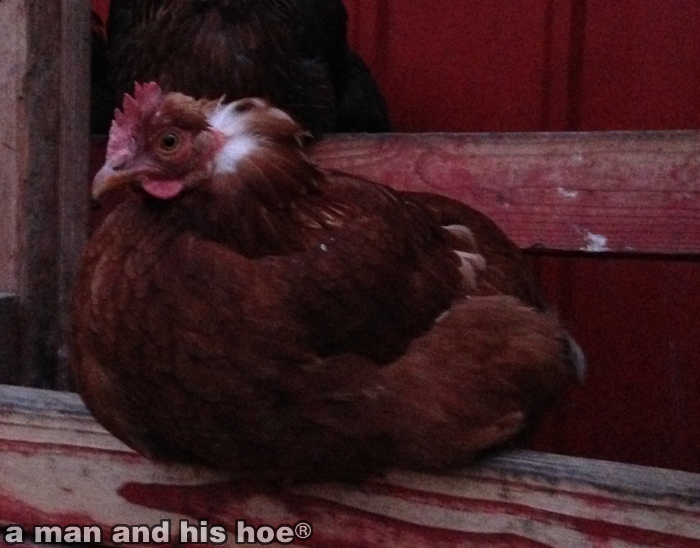
-
Beauty On a Post

This handful of moss is so lush, you might think I took a close-up of moss at Sanzen-in, but it’s moss growing on the top of a fence post next to my vegetable beds.


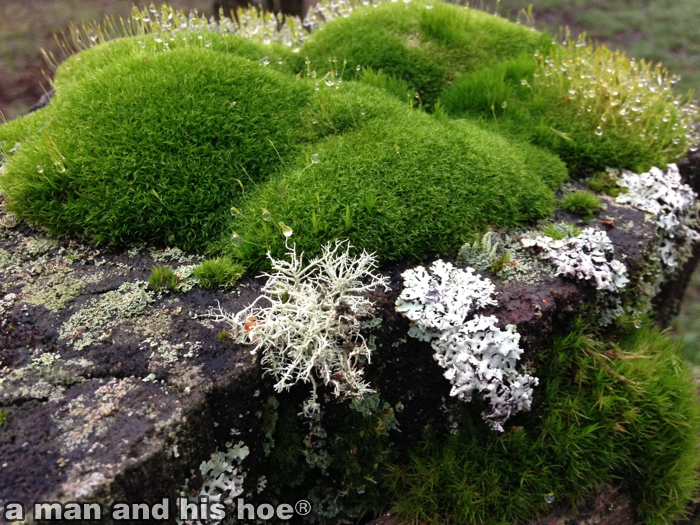
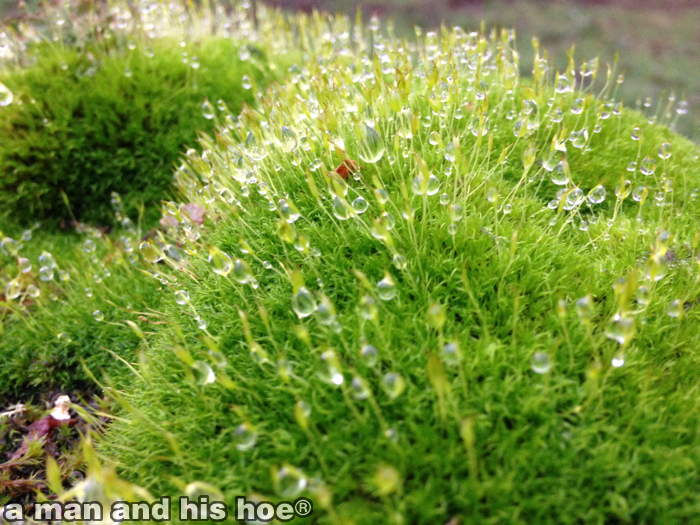
-
One Head – Two Heads
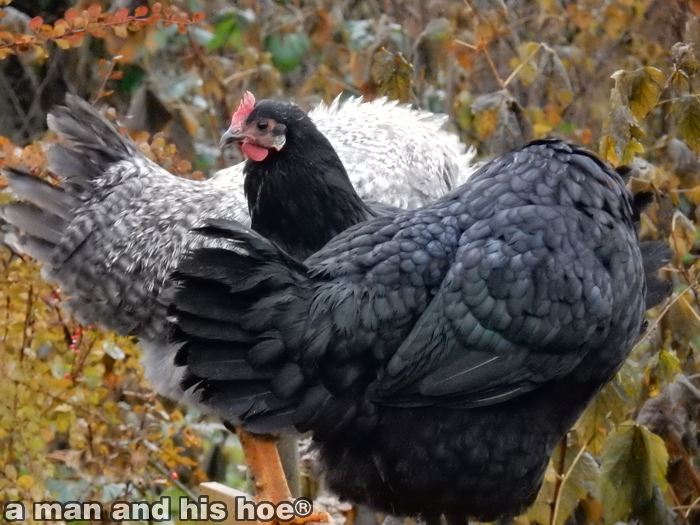
First there is one head, then there are two heads. There is safety in numbers. Three heads are better than one. With two other chickens paying attention, it’s safe to preen and take your eye off your surroundings. If a hawk or eagle or farmer with a butcher knife appears, someone will sound the alarm so everyone can escape.
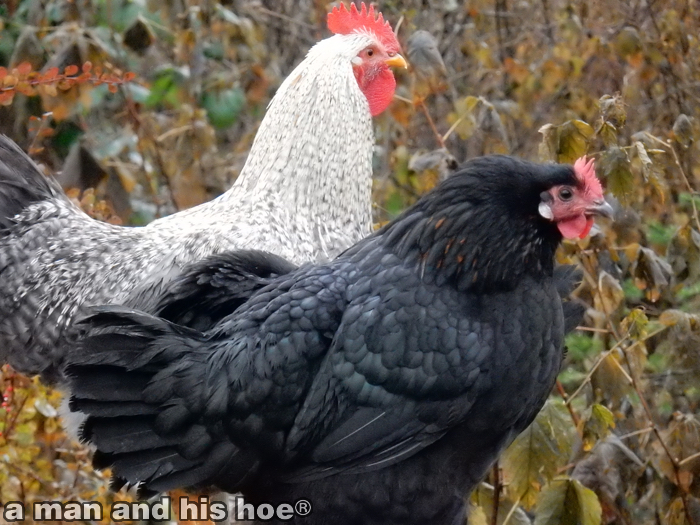
Fences make good places to take a break. Nothing can sneak up from behind, and it’s easy to spot danger from afar. Take a look at their heads. Each one is pointed in a different direction. Coupled with a chicken’s remarkable ability to see nearly all around them, very little happens without them seeing it. Which explains why chickens have so much to gossip about.
Humans often begin salacious conversations with, “Did you see … ?” Among chickens, it goes without saying that they saw it already, so their gossip must start with, “What do you think of that, Hazel?”
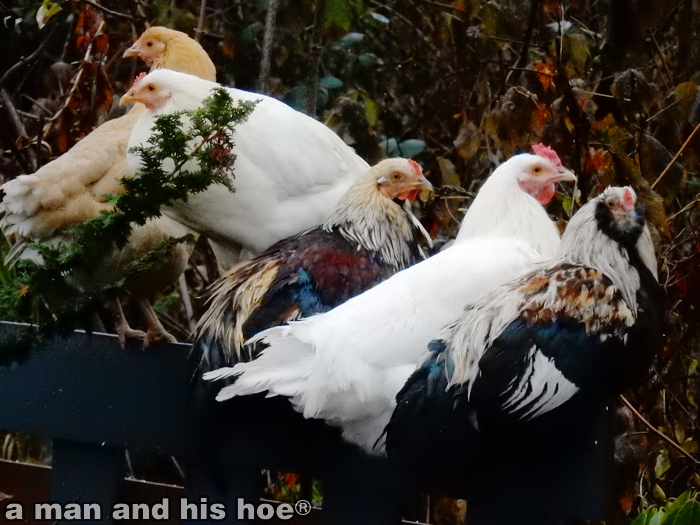
-
The Color of Rain
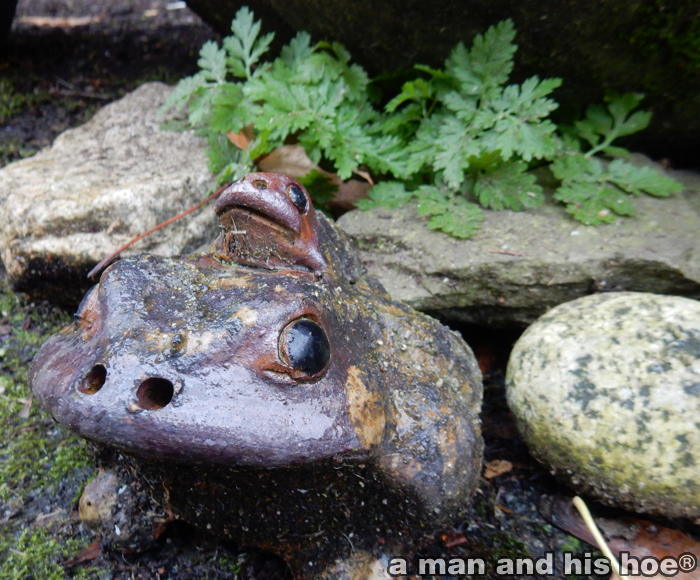
What is the color of rain? Trickling through the trees, it forms dazzling jewels on the tips of leaves and needles. But the real color of rain is green. Rain makes the forest possible. It makes the gardens grow. It lets the bean vines reach for the skies. Places where it rains are green and lush. Rain makes picking fresh herbs in the dead of winter possible. It comes down to this axiom: no rain, no green.

